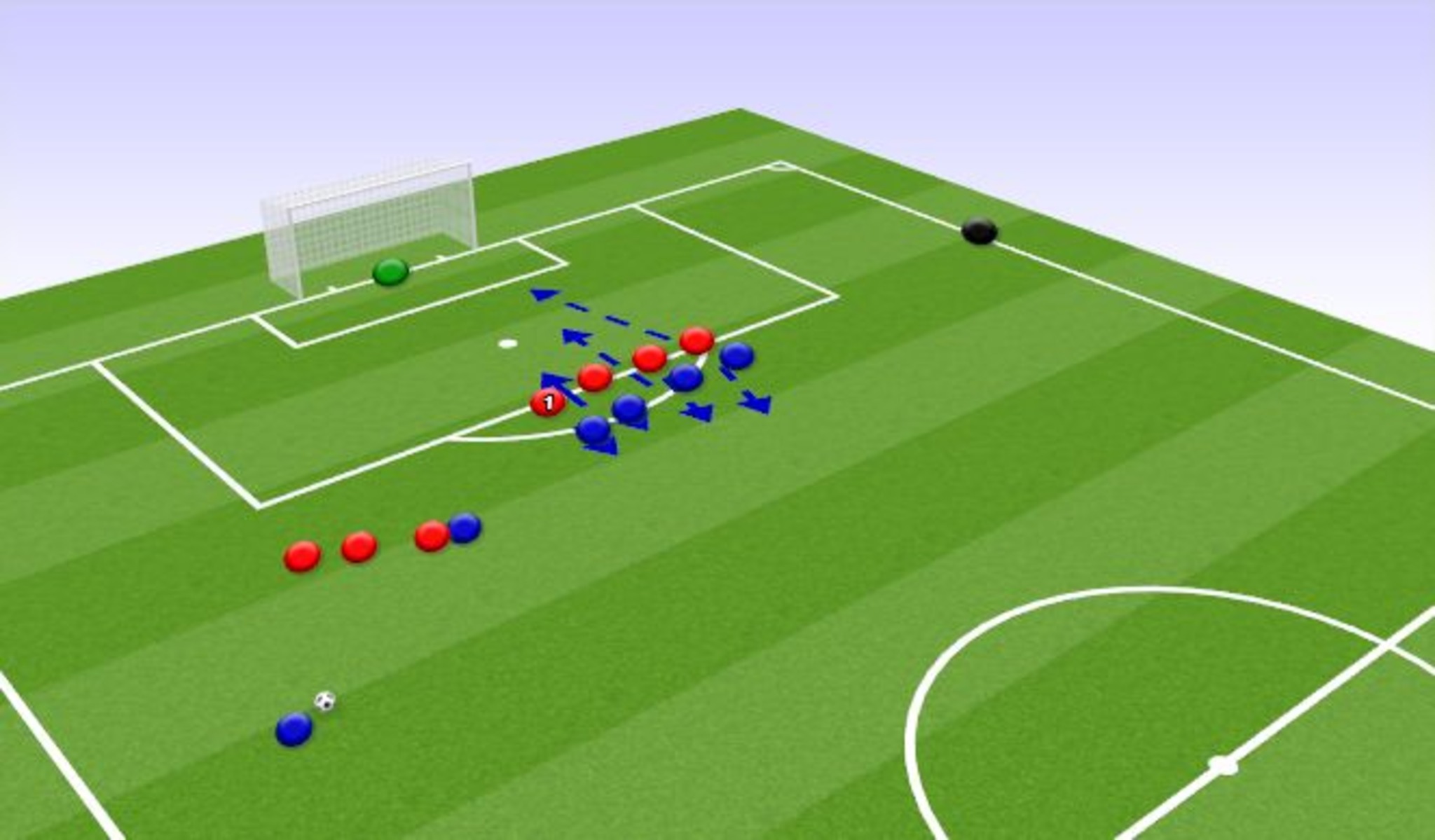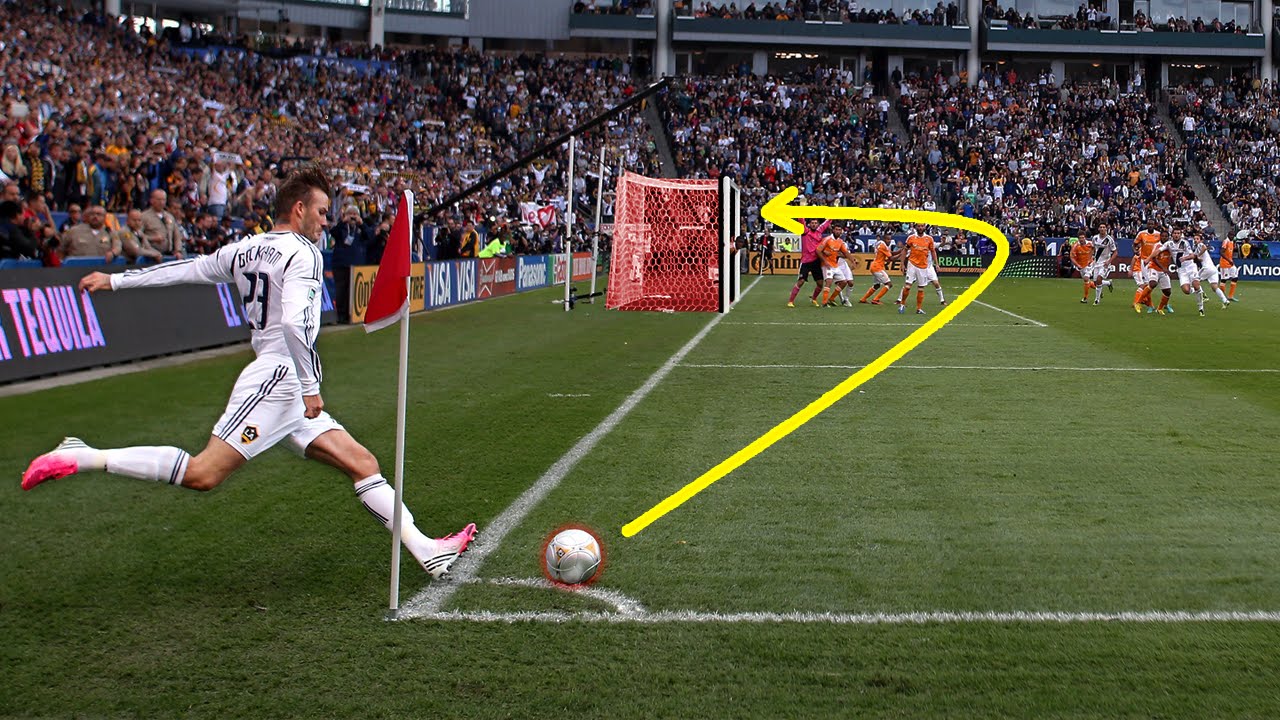The Definitive Handbook To Set Pieces In Football: Strategies, Tips, And Practices
In football, even the smallest moments can have the biggest impact. Set pieces in football are those crucial throw-ins, corner kicks, goal kicks, penalties, and free kicks that often hold the key to victory or defeat.
Author:Suleman ShahReviewer:Han JuSep 08, 202329.9K Shares467.6K Views

In football, even the smallest moments can have the biggest impact. Set pieces in football are those crucial throw-ins, corner kicks, goal kicks, penalties, and free kicks that often hold the key to victory or defeat. These are the instances when the game pauses, players catch their breaths, and strategies unfold.
Whether you're a seasoned pro, a newcomer to the sport, or someone who meticulously tracks stats and odds on platforms like The Punters Page, understanding set pieces is vital. Especially when you consider that "Your tip" could very well be "Scientifically founded" based on how well a team performs during these set pieces.
Let’s look into each set piece, provide professional advice on how to execute and defend it, and offer strategies to make the most of these game-changing moments.
Why Set Pieces In Football Matter
Before diving into the details of individual set pieces, let's take a moment to understand their importance. Set pieces happen when the ball goes out of play, either because of a foul or because it crosses one of the field's boundaries. These moments break the flow of the game and allow both teams a chance to deploy strategic plays. Goals are often scored from set pieces, which is why professional teams devote substantial training time to both executing and defending them. Now, let's move on to the types of set pieces you'll encounter in a football match.
The Different Types Of Set Pieces
Throw-Ins
When the ball crosses the touchline, a throw-in is awarded to the opposing team. Players execute throw-ins by holding the ball with both hands, keeping both feet on the ground, and throwing the ball back into play from behind their heads. Contrary to most situations in football, this is the one-time outfield players are allowed to use their hands.
Expert Advice: Throw-ins can serve as more than just a way to continue play. Teams often use them to switch the field or move the defense around. Some players specialize in long throws, turning these moments into pseudo-corner kicks that put pressure on the opposing defense.
Corner Kicks
A corner kick is awarded when the ball crosses the goal line but doesn't enter the goal, and was last touched by a defender. The attacking team places the ball inside a small arc near the corner flag and attempts to create a scoring opportunity.
Expert Advice: Placement and strategy are crucial for corner kicks. Some teams opt for an inswinging corner, aiming to curl the ball into the net, while othersprefer an outswinging corner to pull defenders out of position. Pre-planned moves and fake runs can also open space for attackers to exploit.
Goal Kicks
Goal kicks occur when the ball crosses the goal line without entering the net and was last touched by an attacking player. Typically, the goalkeeper performs the goal kick, placing the ball within the goal area and trying to kick it as far downfield as possible.
Expert Advice: While the primary aim is to get the ball out of the defensive zone, skillful players may use goal kicks strategically to find teammates in advantageous positions. In youth games, it's often more beneficial to pass to a nearby defender due to the limited kicking power of younger players.
Penalties
Penalties are perhaps the most high-stakes set piece in football. They are awarded when a foul occurs within the penalty area. The ball is placed 12 yards from the goal, and it's typically a one-on-one showdown between the kicker and the goalkeeper.
Expert Advice: Penalty kicks are as much about psychology as they are about skill. Knowing the tendencies of the goalkeeper can give the kicker an edge, just as goalkeepers can benefit from understanding the habits of the kicker. Feints and staggered run-ups can also add an element of unpredictability.
Free Kicks
Free kicks are similar to penalties but can occur anywhere on the field and are generally awarded for less severe fouls. They come in two varieties: direct, from which you can score, and indirect, which requires a touch from another player before a goal can be scored.
Expert Advice: Like corner kicks, free kicks offer a range of possibilities depending on the situation. When closer to goal, players may opt for a direct shot. In other scenarios, a well-placed cross into the penalty area might be the best course of action.
Defensive Strategies For Set Pieces
At senior levels, being organized is crucial. As Coach Wright puts it, "You need to be organized and know what your structure is if you’re defending free kicks or corners."
Knowing individual and collective responsibilities can make or break the team's defensive performance. Engage players who enjoy defending in planning these moments.
According to Coach Coutts of the Player Development Project, doing so not only improves defensive cohesion but also creates a sense of ownership among the players, which ultimately leads to better performance on the field.
Practicing Penalties
Simulating the high-pressure scenario of a penalty kick in practice sessions is crucial for players to build confidence.
Coach Coutts suggests creating situations where missing a penalty doesn't have a substantial impact, but the feeling of pressure is still simulated. Coach Wright also advocates for having penalty shootouts at the end of training matches to introduce an element of competition and pressure.
Set Pieces In Football FAQs
Why Is It Called A Set Piece In Football?
In football, the term "set piece" denotes scenarios where the ball re-enters open play, usually after a pause in the action. These situations typically occur in forward areas of the field and can arise after various stoppages like fouls or balls going out of play.
How Does A Set Piece Improve Performance?
Analyzing set pieces is fundamental for optimal football performance. It helps in tactical planning, opens avenues for scoring, strengthens defensive capabilities, and guides data-driven decision-making.
What Is Considered A Set Piece?
In football, a set piece describes an offensive strategy initiated during a stoppage or a "dead ball" situation. These plays aim to move the ball forward, often leading to goal opportunities, as players are positioned for optimal scoring chances.
Conclusion
Set pieces in football are fascinating. It combines strategy, skill, and psychology. Understanding the nuances of each type, along with expert advice on execution and defense, can provide a significant edge in the game. Whether you're a player or a coach, investing time in mastering set pieces is essential for overall success.

Suleman Shah
Author
Suleman Shah is a researcher and freelance writer. As a researcher, he has worked with MNS University of Agriculture, Multan (Pakistan) and Texas A & M University (USA). He regularly writes science articles and blogs for science news website immersse.com and open access publishers OA Publishing London and Scientific Times. He loves to keep himself updated on scientific developments and convert these developments into everyday language to update the readers about the developments in the scientific era. His primary research focus is Plant sciences, and he contributed to this field by publishing his research in scientific journals and presenting his work at many Conferences.
Shah graduated from the University of Agriculture Faisalabad (Pakistan) and started his professional carrier with Jaffer Agro Services and later with the Agriculture Department of the Government of Pakistan. His research interest compelled and attracted him to proceed with his carrier in Plant sciences research. So, he started his Ph.D. in Soil Science at MNS University of Agriculture Multan (Pakistan). Later, he started working as a visiting scholar with Texas A&M University (USA).
Shah’s experience with big Open Excess publishers like Springers, Frontiers, MDPI, etc., testified to his belief in Open Access as a barrier-removing mechanism between researchers and the readers of their research. Shah believes that Open Access is revolutionizing the publication process and benefitting research in all fields.

Han Ju
Reviewer
Hello! I'm Han Ju, the heart behind World Wide Journals. My life is a unique tapestry woven from the threads of news, spirituality, and science, enriched by melodies from my guitar. Raised amidst tales of the ancient and the arcane, I developed a keen eye for the stories that truly matter. Through my work, I seek to bridge the seen with the unseen, marrying the rigor of science with the depth of spirituality.
Each article at World Wide Journals is a piece of this ongoing quest, blending analysis with personal reflection. Whether exploring quantum frontiers or strumming chords under the stars, my aim is to inspire and provoke thought, inviting you into a world where every discovery is a note in the grand symphony of existence.
Welcome aboard this journey of insight and exploration, where curiosity leads and music guides.
Latest Articles
Popular Articles

